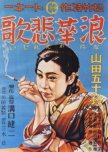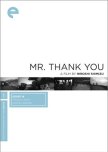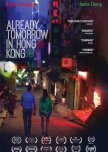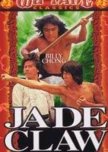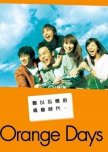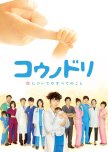
"We'll take a cup of kindness yet, for auld lang syne"
The title Hotaru no Hikari referred to the Japanese version of the song Auld Lang Syne. The film focused on two school girls in a tight group of friends just before and after graduation. Love, friendship, and broken hearts flowed freely as the young women tried to navigate their feelings and world outside.Sanae and Omie are close friends readying for graduation. Their lives have very different paths before them. Omie is a gifted pianist and going to Europe for further studies. Sanae is to be married to the bedridden son of the man who paid for her schooling and saved her father’s shop after an earthquake. Sanae is in love with Ariga, “The Prince”. When he asks her to marry him, she refuses without explaining. Distraught at a future without any brightness she goes to her friend Omie for help. Although Omie supports her, she excitedly mentions that Ariga is going to be accompanying her to Vienna. Broken at the news Sanae leaves but doesn’t return home. She makes her way to her “retired” teacher’s house where she helps with the farm work. Sanae may have stepped aside for her friend, but Ariga has other ideas. As the center of the friend group’s attention, Omie does not offer Sanae the same generosity in love.
This film took some effort to recognize the main characters. Initially, many of the students were introduced only to be sent to the sidelines. It did not help that Sanae and Omie/Ishii went by several names. The realities for women were stressed by parents and school authorities. Being a wife and mother was the only path to happiness for women. And women were to marry whoever their parents chose for them even if that person was an invalid. Director Sasaki dared to question some of those presumptions. Omie told Sanae, “Before being a daughter, we must think we are women first.” She also counseled her friend to not be afraid to leave her family and make a life for herself. Sanae boldly chose to do just that. The betrothed Sanae recognized her father’s actions for exactly what they were, “I was sold.”
Early in Japan's talkie era, HnH utilized sound with numerous sing-a-longs with the girls on their outings and in school. Omie demonstrated her ability on the piano several times as well. In the 1938 version of pop-ups, silent film intertitles and clips from Sanae’s diary often appeared to explain things to the audience. The diary pages revealed her innermost feelings and thoughts which I liked but some of the other written explanations would have been better acted out. The film was beautifully shot for the time with creative shots of scenery and buildings interspersed. Despite those appealing frames, time has not been kind to Sasaki's work with many scenes left quite blurry, often obscuring faces.
Also known as Auld Lang Syne or The Light of the Fireflies, Hotaru no Hikari was an interesting watch of young women breaking with tradition. My biggest complaint arose from the final act’s melodramatic noble idiocy. I had become invested in Sanae’s decisions and was quite aggrieved by the ending. This 1938 melodramatic story of friendship and love could have used a cup of kindness to ease the bitterness of the drink.
4/4/24
Was this review helpful to you?




